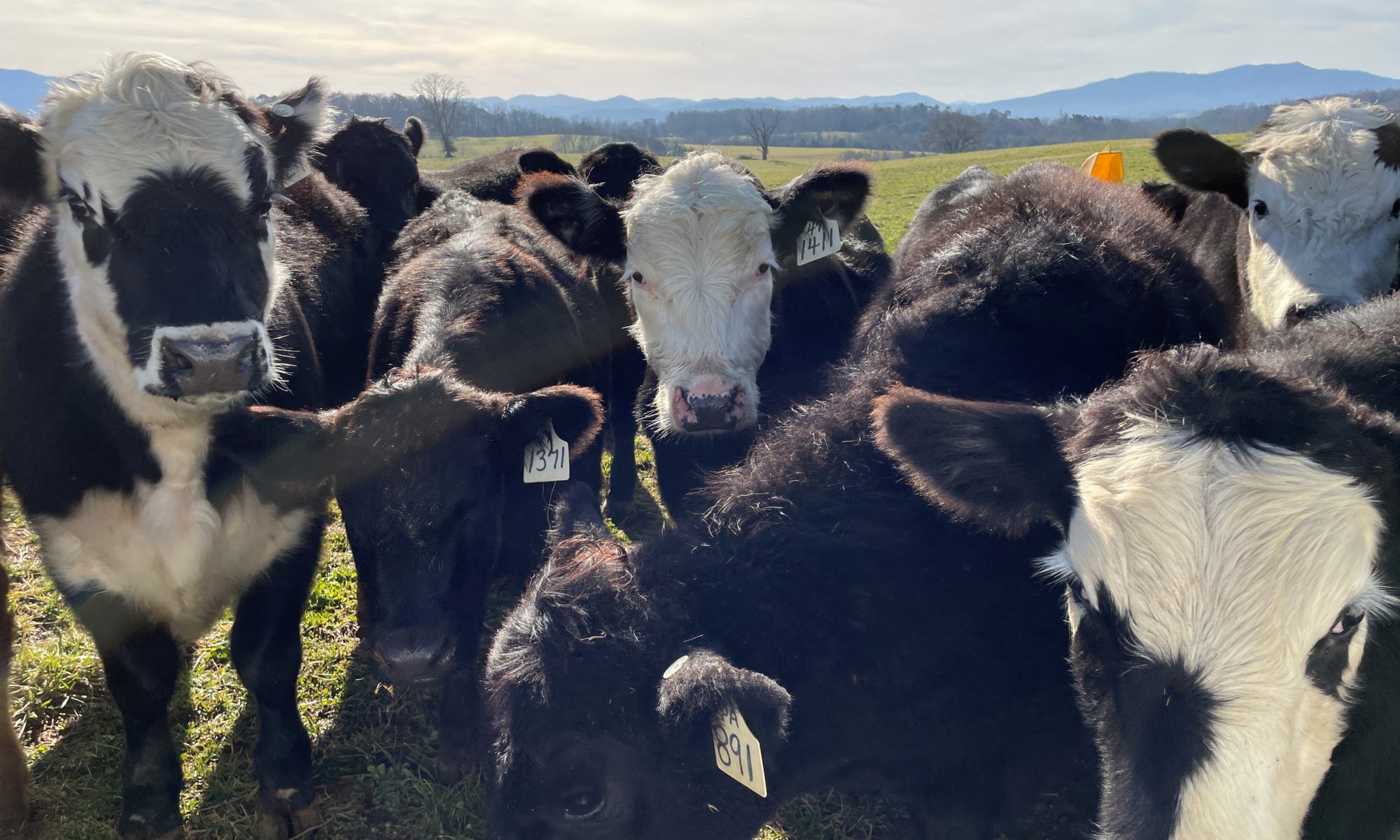

Dr. Andrew Griffith
Assistant Professor
Department of Agricultural and Resource Economics
P: 865-974-7480
By the time this article reaches most readers, cattle producers will be in the middle of winter and will likely be tired of feeding hay or other feedstuffs to nutritionally manage the cattle herd. With that in mind, it is sometimes difficult for producers to begin planning how they will feed animals the remainder of the year and the next winter or even through a drought period. Despite this difficulty, now is a good time for producers to begin considering and planning how to feed cattle through 2022. There is no doubt producers have already thought about how high prices are and will be for fertilizer, fuel, and supplemental feed alternatives. However, many producers have not made a complimentary set of management decisions to address these challenges.
What do I mean by a “complimentary set of management decisions?” Many producers have already made some management decisions such as not applying fertilizer or not purchasing supplemental feed. There is nothing wrong with either of these decisions if other appropriate management decisions accompany these decisions. Similarly, there will be producers who make no changes to management decisions and continue to apply the same quantities of fertilizer and purchase the same quantity of feed despite higher input prices. This may also be appropriate if certain management decisions are made to compliment this strategy.
It almost sounds like a person talking out of both sides of his mouth or saying a producer cannot make an incorrect decision, but neither of these statements is correct. It actually falls more in line with Newton’s Third Law, which states for every action there is an equal and opposite reaction. Newton’s Third Law is focused on forces acting upon each other while we are discussing how one decision influences other decisions. In essence, deciding not to fertilize hay and pasture ground or to not purchase supplemental feed will have an impact on cattle performance unless other decisions are made to counteract the original decision.
Suppose no fertilizer and no supplemental feed are purchased in 2022. Can a cattle producer expect weaning weight of calves to increase or decrease, conception rates to increase or decrease, pasture to be overgrazed or underutilized, and the list could continue? It is impossible to know with certainty the answers to these questions as outside factors could greatly influence the ultimate outcome. However, most producers would expect lighter weight calves at weaning, reduced conception rates, and overgrazed pasture if no other management decisions are considered. Additionally, many of these expected outcomes have longer term cost implications than just one year. Alternatively, consider the producer who decided to reduce his or her stocking rate to address the decision of fewer inputs. The answers to the aforementioned questions are more difficult to answer.
Considering the two scenarios, one may be able to make some assumptions on how production would be influenced, but simply considering production does not consider how the decisions influence profitability. At the end of the day, businesses, including cattle businesses, have to consider how each and every decision influences profitability. This is one reason we develop annual cow-calf and stocker/backgrounding budgets. These budget tools can be used to estimate how certain decisions will influence both production and profitability of an operation. This information can then be used as a producer attempts to make plans for the current and future production cycles.
Looking back at the scenario of a producer making no changes in 2022 relative to 2021, one might find out that the increase in input costs exceeds the increase in cattle price, which would result in a decline in year-over-year profitability. Another producer making that same decision may find a different result given that no two operations are the same. Regardless of the operation, it is important for producers to evaluate how decisions influence profitability and make decisions that compliment other decisions.
Potential users of the University of Tennessee cow-calf and stocker/background budget can find the 2022 budgets at the following website https://arec.tennessee.edu/extension/budgets/. These budgets can be found in a PDF and an Excel format. Users of the budgets are encouraged to modify the budget to fit their operation. If assistance is needed then please contact the local county Extension office or me.
